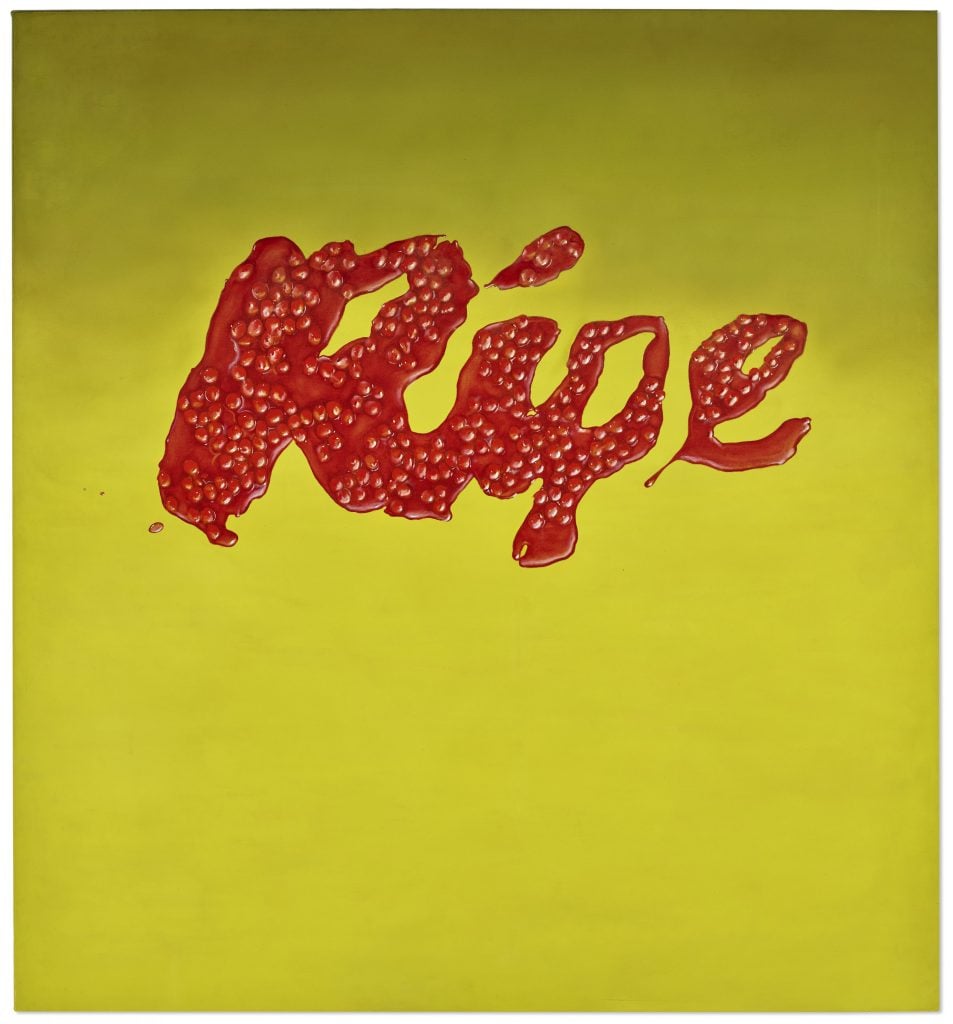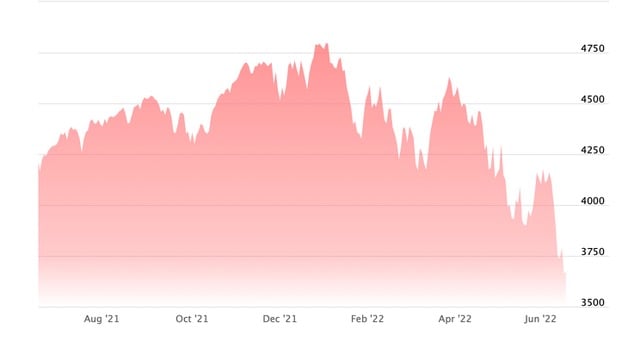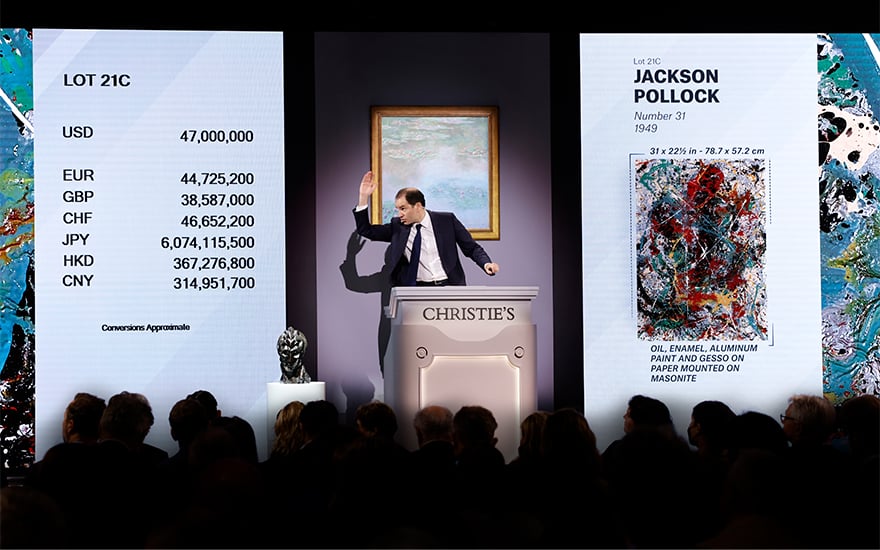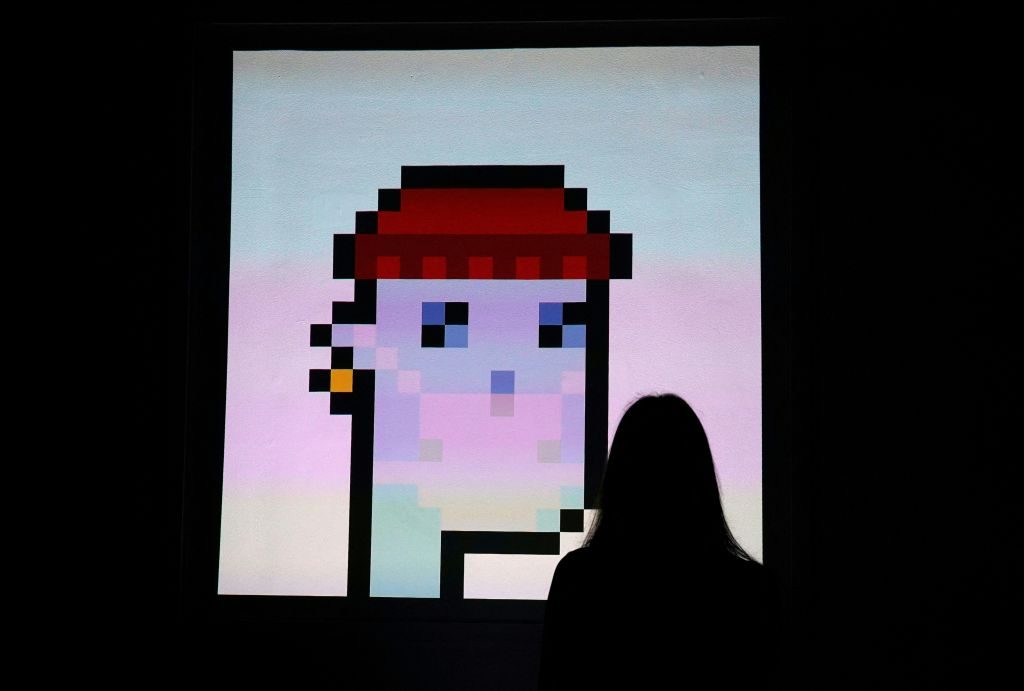The Art Detective
Has the Art Market Peaked? Here Are 3 Signs Experts Are Watching for as a Recession Looms
It’s not a matter of if, but when and how bad it’s going to hit.

It’s not a matter of if, but when and how bad it’s going to hit.

Katya Kazakina

The Art Detective is a weekly column by Katya Kazakina for Artnet News Pro that lifts the curtain on what’s really going on in the art market.
In Basel, the sky was clear blue, the sun was shining brightly, and visitors waded into the Rhine to cool off. The mood was appropriately euphoric. During the Swiss fair this past week, galleries sold art—a lot of it—accompanied by triumphant headlines: A $40 million Bourgeois! A $15 million Bacon!
Out of sight, though, the heat and humidity were building up. The storm was coming.
“I think we already passed the top of the market,” a money manager with a major bank told me. “We are over the hump and now on our way down.”
The art market often seems disconnected from the real world. As Art Basel basked in the afterglow of the record-setting $2.7 billion May auctions in New York, Russia’s brutal invasion of Ukraine approached the four-month mark, the financial markets slipped into “bear” territory, governments hiked interest rates in an attempt to keep inflation at bay, and cosmetic giant Revlon declared bankruptcy.

The value of Bitcoin over the past year. Screenshot via Google.
Calling the top of any market is tricky. Things take time to settle. It’s not a matter of if, but when and how bad it’s going to hit.
“You never know what triggers the crash,” said collector Alain Servais, who started his career in the financial industry the day the market tumbled in 1987. “I’ve been through five or six crashes. What strikes me is that the day before, the articles in the newspapers are still fine. But the conditions are there, and that’s what worries me.”
As a journalist, I’ve covered countless robust auctions and fairs in times of economic volatility and political instability. I remember only a handful of instances when things really bombed. There was the bloodbath of October 2008 in London—the Phillips evening sale where lot after lot after lot after lot flopped. There was the fall of 2016, when Zombie Formalism imploded. There were individual artist’s markets whose prices went from boom to dust (remember Anselm Reyle?).
Here are three key indicators art market observers are watching now as they try to gauge what comes next—and why, in each case, it will be more difficult to break through the noise than it was before the pandemic transformed the art market.

S&P 500 1 year chart. Screenshot via Google
Since the 2008 financial crisis, the growth of the art market (and other alternative asset classes) was significantly underpinned by historically low interest rates. Art-lending blossomed as financially savvy collectors leveraged their Warhols and Rothkos to get essentially free money to buy more art or finance other investments.
Those days are now gone. U.S. inflation hit 8.6 percent in May, a four-decade high. To stem the tide, the Federal Reserve raised its short-term benchmark rate by 0.75 percent, the biggest rate hike since 1994.
Meanwhile, the stock market is a sea of red, with blue-chip shares of Amazon, Apple, and Alphabet in decline and the top indices like S&P 500, Dow Jones, and Nasdaq in the bear market. Bitcoin is a wild mess.
William Goetzmann is known for his research on the relationship between the stock market and the art market. “It’s got a lag to it,” said the faculty director of the International Center for Finance at the Yale School of Management.
Indeed, global auction sales dropped a modest 12 percent in 2008. It wasn’t until the following year that the financial crisis made real ripples in the art market, driving total sales down 36 percent further, to $6.4 billion, according to the Artnet Price Database.
“The art market is like a Brontosaurus, of which you cut the tail,” Servais said. “You know, the time that information gets to the brain, it could be a couple of months.”
But even during this period, many of the rich remained insulated from financial disasters. Some, like Eli Broad and Mitchell Rales, augmented their collections significantly. In February 2009, the thick of the market’s trough, Christie’s managed to set a new record for a private collection with the $484 million sale of art from Yves Saint Laurent and Pierre Bergé.
“In 2008, 2009, we saw that at the very high end of the art market, things seem to be fairly steady,” Goetzmann said.
Complicating Factor:
This time around, market participants are dealing with an additional element: inflation, which pushes prices up. “We’ve got this funny situation,” Goetzmann said. “I don’t know which direction the average is going to take given those contradictory forces.”

Auctioneer Adrien Meyer selling Jackson Pollock’s Number 31 (1949) Image courtesy Christie’s.
Many observers are looking at public auctions as the market’s barometer. A slowdown will be visible as a big decline in volume.
“The consignments are done between six months and three months in advance for the auctions,” said Servais, noting that most May auctions were sourced earlier in the year when “people thought inflation was provisional and the market was stable. I don’t think it would be possible to have this kind of consignment in the current uncertainty,” he said.
The first test of the market in flux is coming at the end of this month during 20th and 21st century evening sales in London at Sotheby’s, Christie’s, and Phillips. “I don’t think it was easy to get great material for the sales in London coming up,” said New York art advisor Wendy Cromwell.
Big auctions in New York in November will offer an even more accurate picture of the art-market environment. “I don’t know if people are going to be nervous about selling in the fall at auction,” Cromwell said.
Recent market contractions saw a drastic reduction of top-quality supply. The auction houses typically get more picky, offering fewer guarantees. Consignors get cold feet. Sales become thin.
In 2009, the number of pieces consigned worldwide with a low estimate between $1 million and $10 million dropped almost 60 percent. The number of works consigned with a low estimate of $10 million or higher dropped nearly 75 percent, to just 12.
Complicating Factor:
Auction houses have gotten smart and learned how to boost their sell-through rates by simply withdrawing the lots that don’t drum up enough presale interest. This way, instead of being bought in (and “burned”) publicly, they can be offered privately later. And they don’t drag down the auction’s sell-through rate, making the true state of play harder to discern.

A Larva Labs CryptoPunk. during a media preview on June 4, 2021, at Sotheby’s.(Photo by TIMOTHY A. CLARY/AFP via Getty Images)
Since the onset of the pandemic, new money has poured into the art market’s most speculative segments, such as NFTs and emerging art. Works by untested artists have been selling for millions of dollars at auction. Last year, ultra-contemporary art (work by artists born after 1974) accounted for $742.2 million of the fine-art auction market’s $16.3 billion total, up 190 percent from 2020. Even evening auctions are filled with flipped works by artists most people never heard of, art advisor Allan Schwartzman told me last week. Some call it “meme art.”
“There often seems to be a phenomenon where the most recent beneficiaries of an art market boom are the hardest hit in a sharp downturn,” said Natasha Degen, chair of art market studies at the Fashion Institute of Technology in New York.
Among these were French contemporary art in the early 1960s and non-conformist Russian art in the years following the collapse of the Soviet Union in the 1990s, she said. More recently, we’ve seen artists associated with Zombie Formalism suffer the same fate.
“The biggest names associated with an art-market boom—the ones who have fetched extraordinary prices at auction, for instance—will almost certainly suffer from a downturn, though they are the likeliest to rebound, as they have the highest number of individuals and institutions who have an interest in their continued success,” Degen said.
Complicating Factor:
Galleries and artists have wised up since the collapse of Zombie Formalism, which had almost no institutional traction. These days, galleries promote “BOGO” deals, selling coveted pieces only to collectors who promise to buy a second work and donate it to a museum. It remains to be seen whether this new development will shield young artists from being wiped out by the market.
Back in Basel, after days of heat and humidity, a storm finally hit around 2 a.m. on Thursday, drenching the buzzy crowd of dealers, artists, and collectors at the Kunsthalle Basel, a popular outdoor late-night spot.
“It didn’t last long, but was brutal and surprising,” said Servais, who couldn’t help but notice a certain parallel between weather patterns and the art market.
“Exactly the same way as the sky above Art Basel business is very good right now, everybody is happy. But it doesn’t mean that a storm cannot happen tomorrow.”